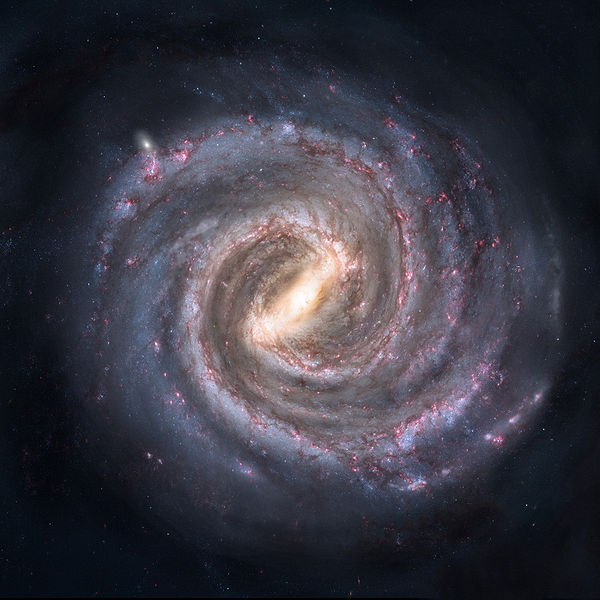
© Wikimedia CommonsArtist's conception of the Milky Way galaxy.
It's a significant finding in the search for signs of extraterrestrial life.
According to astronomers using the National Science Foundation's Green Bank Telescope, evidence of prebiotic molecules have been discovered in interstellar space - the first such evidence unearthed. The finding, according to experts, could increase the odds of discovering life outside of our own solar system.
Among the prebiotic molecules discovered by a team of Virginia astronomy students includes a molecule called ethanamine, which is thought to produce adenine, one of the four nucleobases that form the rungs of DNA. Another newly-discovered molecule, called cyanomethanimine, is thought to have a role in the formation of the amino acid alanine - a key process in biology. Laboratories at the University of Virginia and the Harvard-Smithsonian Center for Astrophysics measured radio emission from cyanomethanimine and ethanamine, and the frequency patterns from those molecules then were matched to publicly-available data produced by a survey done with the GBT from 2008 to 2011, researcher said in a statement released to the press Thursday.
Studying a giant cloud of gas 25,000 light-years from Earth - near the center of our Milky Way Galaxy - the University of Virginia astronomers say the newly-discovered interstellar molecules represent intermediate stages in multi-step chemical processes leading to the final biological molecule. Details of the processes remain unclear, but the discovery provides astronomers with new insight on where and how these processes occur.
According to researchers, the discovery was made possible by new technology that speeds the process of identifying the "fingerprints" of cosmic chemicals. The ability to identify the changing sequence is related to the ability to identify specific amounts of energy emitted or absorbed, which until now was largely impossible. New laboratory techniques have allowed astrochemists to measure the characteristic patterns of such radio frequencies for specific molecules. By collecting that information, astronomers say they then can match patterns that reveal evidence of certain molecules.
The study comes as scientists previously thought such processes only occurred in areas dominated by gas between stars. However, astronomers now say the complex chemical formation sequences for these molecules occurs not in gas, but on the surfaces of ice grains in interstellar space. While the discovery is widely seen as groundbreaking, astronomers cautioned against reading too much into it, saying more research is needed.
Still, the finding could increase the odds of finding alien life. Extraterrestrial intelligence has long been a hot topic among astronomers, biologists, and the general public, and a series of future and present space missions have made discovering signs of life a main priority. Currently, NASA's Mars Curiosity rover is engaged in the most high-profile search for extraterrestrial life. A series of future missions by the U.S. space agency will also search for signs of organic compounds on asteroids and comets.
The study was a work in collaboration with University of Virginia professors Brooks Pate and Ed Murphy, and Remijan. The program was funded by the National Science Foundation.

Reader Comments
to our Newsletter